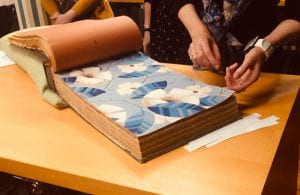Technology: Helping to connect users and information agencies
What role does technology play in the relationship information agencies develop with their users?
Technology was a common theme in the presentations of information agencies across a broad spectrum in the Sydney 2 study visit session. The uses of technology within the information agencies were integral to the relationship each agency had with its users. Though different uses of technology developed different aspects of the relationship between agency and user, one of the key roles played by technology was that of “connecting”. Technology used by information agencies connects users: to information; to personalised expert help; to the selection process; and to community. These connections create, change and develop various relationships between agency and user.
Technology connects users to information held by information agencies. Furthermore, technology has enabled the location for information exchange to no longer be confined to the library’s physical location, but rather freed in a new virtual mode of relationship between agency and user. Many of the information agencies on the Sydney 2 itinerary had online public access catalogues (OPACs) and e-Resource collections and had digitised selected items from their collections. Providing round-the-clock access to information and resources online extended the reach of these agencies, both geographically and temporally. This enabled them to forge relationships with users that they would not have had contact with otherwise due to distance or time constraints on users’ ability to physically access the library during opening hours.

For instance, the Caroline Simpson Library of the Sydney Living Museums has been contacted by users from around the globe in search of rare items that they have made available through their OPAC and through digitised items hosted on the Internet Archive (M. Stephens, personal communication, October 1, 2019). This interest from abroad in a small, specialised library whose main purpose is to provide support for the interpretation of historical houses would have been almost unheard of in the pre-Internet era. Woollahra Library owes approximately 10% of its circulation to e-Resources. It reports that a significant and growing number of its active membership maintains an exclusively virtual relationship with the library – never setting foot in any of the three physical branch locations (V. Munro, personal communication, October 2, 2019). Those are just two ways that we see technology connecting users to information and developing geographically extended and virtual relationships between information agencies and their users.
Continue reading “Technology: Helping to connect users and information agencies”